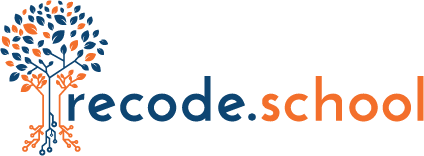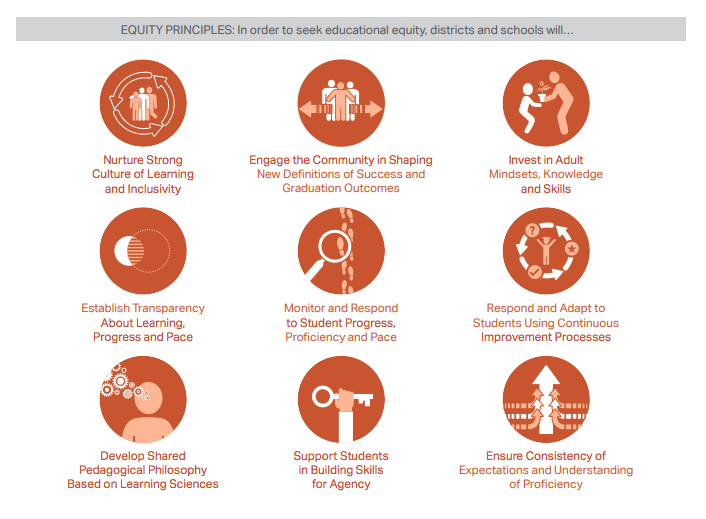thoughts on linking deeper learning and equity
I've been leading deeper learning work here in Kentucky now going on a decade. One thing that troubles me is that we as a community struggle to link the concepts of deeper learning and equity together. A recent interview with Carmen Colemen and John Marshall of Jefferson County on this was good, but not as great as it could have been had we been able to articulate with specificity how these ideas go together.
At STEAM I've seen first hand how our school models, instructional strategies, and supports can change lives and I know deep in my bones these concepts work together. But, I'm a professor, we need more than just feel and a few good stories. Even if we don't have years of solid, peer-reviewed research we at least minimally need to be transparent and articulate our best case for how deeper learning models make schools more equitable places. And then, yes, we need some peer-reviewed research testing those hypotheses. So, here goes:
- Decreased discipline. This is the easy one. At STEAM we have the lowest discipline rates amongst high schools in the city and some of the lowest in the state. We all know that over-discipline issues with minority populations continues to be a challenge for our schools but deeper learning models have shown an ability to reduce overall discipline substantially. I do not think it cures the inherent bias that might reside in the system against minority and poor kids, but a lot less discipline overall is a good start.
- Skills: Lots of people like to talk of Graduate Profiles and that is useful for educators. For the kids, though, it is a simpler, more natural task to develop skills. One develops skills in the process of doing real things. Some of our projects call for managing a budget, for instance. That's a skill. Managing a project to completion. That's a skill. Calling out a team member not pulling their load. That's a skill. Cold calling to ask for an internship placement. That's a skill. It takes practice and, thus, some failure. From an equity standpoint achieving those profile skills are lovely, but the opportunity to do and fail and try again while doing real things ... that's the good part.
- Mentoring. Any educator can tell you that relationships matter, a ton. Most school models, though, keep kids at arms length. A given teacher, particularly in middle and high school, may have a relationship with a child that only concerns the academic material. For many kids, though, they need more than that. Deeper learning models typically make time and build structures around these relationships. Whether it is the mentoring model of Summit, the Advisory Model (Science Leadership from Philly always impressed me), or another approach the understanding that children need deeper relationships and support are central.
- Authentic Projects, with a Social Justice bent. In my experience, when you give an English or Social Studies teacher a task of forming and working with students on a Project Based Learning unit, more often than not those turn into social justice focused projects of some sort. You can browse the High Tech High Project Cards and pretty quickly realize there are topics here that we would not normally open the door to in school. Now, trying to do social justice and talking about deeper questions relative to society does not necessarily equate to higher test scores, but if motivation and efficacy are huge underlying challenges, I've found it is a lot easier to motivate kids on authentic social justice projects and in doing that work they build more self-efficacy.
- Student Choice/Agency: In addition to teacher-created authentic projects, deeper learning models embed more student choice into the curriculum through passion projects, 20% time, and even choice within broader teacher directed projects. Kids will naturally choose to their curiosities, removing one of the more troublesome structural issues within schools which is that many suburban middle class white teachers are making choices for Black, Latino/a, Appalachian or other children who had different formative experiences. We have learned this so many times over at STEAM and been surprised/impressed with how much our children can achieve when they get to choose to learn from what matters to them. Dr. Marcia Carmichael passes along this useful link to an EAQ article which highlight how to get better at student voice within high school reform (and as they point out in a useful graphic, letting students get to youth leadership skills is used infrequently but the most impactful for kids).
- Learning Outside of School: If you add up 2-5 above and then let the kids leave school ... crazy powerful things start to happen. When kids get to select their own internships, engage in authentic challenges, develop community mentors ... it leads to a proliferation of new skills, confidence, opportunities, etc. Big Picture Schools is most known for advancing this model, but any school can do it with a bit of courage. Here is a kid written story on what we do at STEAM. But, here's the catch, you have to let all kids go (this is the part that most schools mess up). There will be some degree of failure and kids trying to get by with some things, but the learning is so overwhelmingly massive that managing the small amount of trouble is worth it. From an equity standpoint, kids from impoverished families get access to organizations and institutions to which they might not otherwise get access. If you hang out in a hospital every afternoon for a semester, it is not too hard to start seeing yourself working there, develop a few vital mentors, and enroll at the nursing program at the community college.
- "Special" Education: Having been involved in crafting a deeper learning school, my thoughts here probably warrant their own post (or book). Suffice for this purpose to say that how we do special education in much of schooling is far away from something we could label as "equity" or even the original intent of the law. I actually bubble a bit with anger thinking about it. Anyway, deeper learning models are more accessible to nearly all children, including most of those that have an IEP. In fact, I'm convinced presently (but open to alternative arguments) that many kids are given an IEP not because they have a disability but rather that the classroom structures they are in are dysfunctional. Deeper learning models permit a wider variety of kids with skills to interact and get a benefit from the time spent in classes. They also let the teachers get off the sage on the stage mentality and provide some extra 1-1 support when needed. On the whole, at least at STEAM, we have found that the normal classroom experience works well for nearly all kids with small doses of extra support sprinkled on top for both IEP and non-IEP students when needed.
- Stop Tracking: From my experience with deeper learning models, there are usually not "tracks" or AP classes or special classes. When we separate children based on perceived ability (based on test scores) we harm everyone in the process. That is not to say that Deeper Learning models do not allow children to separate in terms of the work they are doing at a given moment, just that a single English class or a single PBL should be capable of flexing to each student. Then, on the next project that calls for different skills, the abilities reshuffle and different kids are the high performers. Overall, that is a more equitable approach.
- Transparency. Accompanying many deeper learning transitions is a lot more transparency into the black box of the classroom. This happens in multiple ways. First, digital transparency. Whether it is Summit, Canvas, Classroom or some other LMS usually these transitions come with a 1:1 program and digital sharing of resources, grading, and communication. It is not perfect everywhere, but this transparency helps on the equity front by making clear what's happening in the classroom and how, should they need it, students might fix and even solve learning deficiencies noted by teachers. Second, exhibitions: One critical element of inquiry and project based models is that students show their work at exhibitions. These exhibitions make transparent the learning that is happening both within and between students. It can make "gaps" more noticeable for everyone and this transparency helps to keep everyone, including the kids themselves, focused on helping to equate expectations.
- Buying Time: Let's just be honest, one of the biggest equity challenges out there is that kids from poor families just have to start their adult lives a lot sooner for a variety of reasons. While deeper learning schools embrace the task of practicing adulthood, they are still schools where children are protected as children. Deeper learning model schools keep kids in school longer buying them more time to practice adulthood in a protected environment before being subjected to the rigors and punishments of adulthood outside school. This might seem counter-intuitive or even a small thing, but it isn't at all. Research has shown deeper learning models graduate more kids and enroll more kids in college. Lots of wealthy kids don't develop into adults until their junior year of college, but that's fine since they are still in school, mom might still be washing clothes, etc. Kids of poverty don't really get that option. Every day that passes where we can close that time gap is a small victory. Adolescents gets more time to be young adults rather than heads of households.
So, there you go. If pressed on the link, I'd answer something like that. Feedback welcome.
Now, there are other great voices on this, none respected more than Pedro Noguera, perhaps. In fact, he gave a great lecture at University of Illinois a few years back on this exact topic (video embedded). This lecture corresponded to a paper he released with Linda Darling-Hammond and Diane Friedlaender. Also, these authors teamed up to write one of the three equity chapters in this great book, Rethinking Readiness, published a couple years back. The other two chapters looked at equity issues with dual language students and unique learners.
Competency Works also just released a new look at how Competency models and equity link together which is really robust. You'll notice that some of our ideas overlap. Also, trusted sources on educational equity, such as the Annenberg Institute, have devoted significant effort to understanding and promoting deeper learning ideas. Further, some of the more high profile events, such as the Deeper Learning conference at High Tech High, are focusing on this topic explicitly (see video, which features a Kentucky teacher at the 1:38 mark). So, keep reading, go do some research yourself, and definitely help to shape these ideas for us in Kentucky. In fact, I welcome feedback on great thinkers, sources, or experiences that you have had that link these together. Comment, tweet, or email me.
In closing ... this conversation has to deepen. We can't speculate that deeper learning and equity are the same thing, we need to provide details on how learning models that promote progressive, inquiry, action oriented learning ... lead to equity of opportunity and students emerging from our schools equally ready to take their own brave next steps which contribute to our diverse, socially just society.

